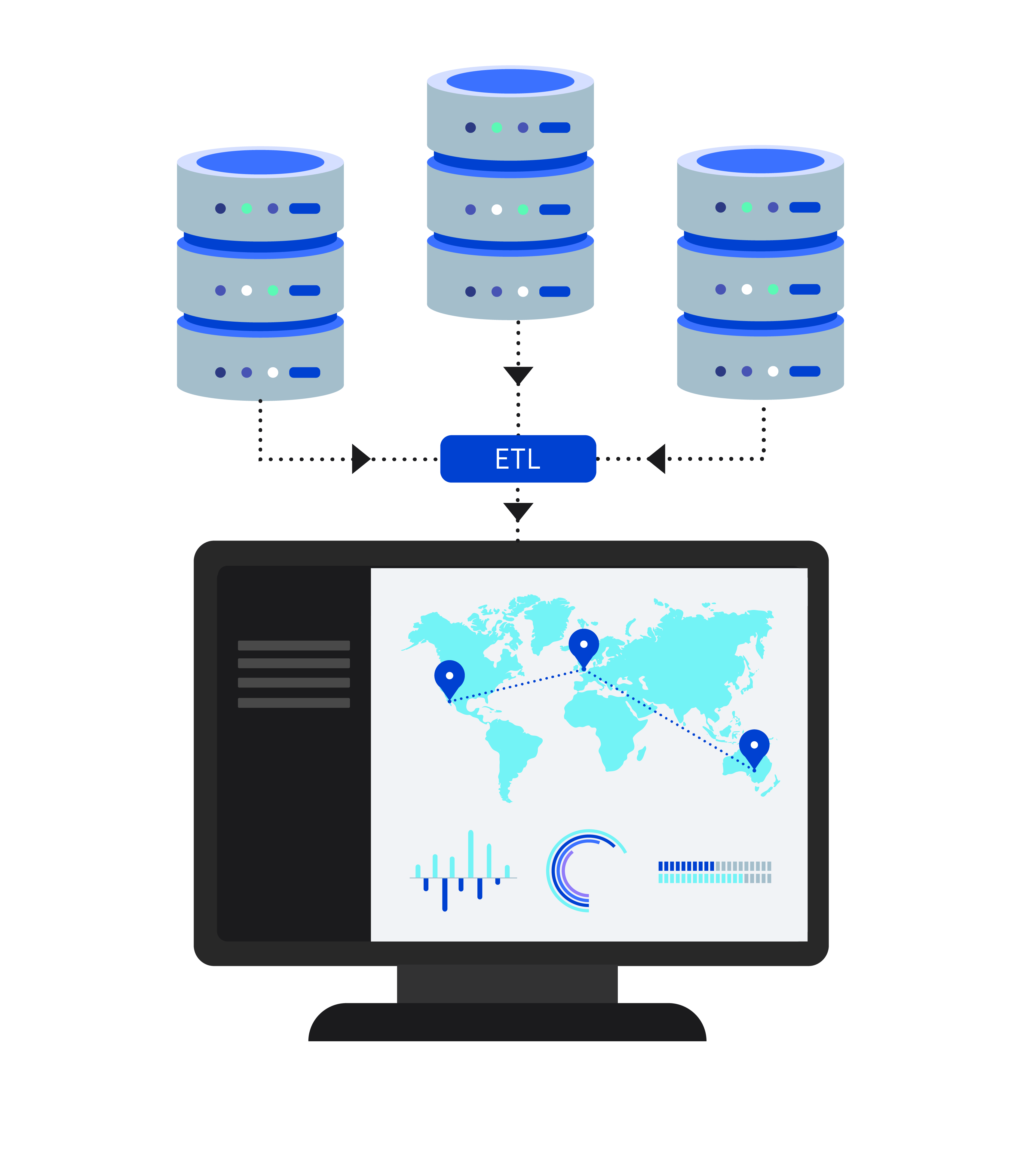ETL is a data integration process that stands for extract, transform and load. The ETL process comprises extraction of data from multiple sources, transforming it into a single and consistent format, before loading into a data warehouse or another final target database.
Before we go any further, let’s learn a bit more about those three steps.
Extract – The data extraction process comprises taking data from source systems which can be in various formats such as relational databases, XML and NoSQL. Extracted data is first stored in a staging area.
Transform – This step sees a set of rules or functions applied to the data to convert it into a single format. This process may include filtering, cleaning, joining, splitting and sorting the data.
Load – The final step takes the transformed data and loads it into the data warehouse, ready for consumption by various business applications including business intelligence, analytics, and reporting.
The combined process of ETL blends data from multiple sources and makes it readily usable by business applications. The process has its origins in the 1970s, with the increasing popularity of centralised data repositories.
However, the role of ETL continued to grow in importance from the late 1980s with the rising use of data warehousing – the process of securely and electronically storing, aggregating and processing information from a variety of different sources. Since then, the demand for ETL solutions has only proliferated. As volumes of data have risen exponentially, data management needs have become more complex, and our ability to extract insights has become more sophisticated.
Today, there are powerful ETL tools available to enable organisations to break data silos and prepare it for extracting insights.

The data is extracted, transformed and loaded into the data warehouse (also known as ETL).
What are ETL tools in data warehousing?
Organisations that rely on data warehousing will require ETL, and there are a number of solutions or approaches that are available as an option for carrying out the various tasks of collecting, migrating, cleaning and loading data from disparate sources into central repositories.
Traditional methods of conducting ETL relied on moving data through hand-coded pipelines but today, ready-made solutions featuring graphical interfaces make the process faster and simpler.
Batch processing solutions, for example, can prepare and process data in batch files. This is usually conducted out of working hours, when there’s less demand on the business’s computer resources. These solutions can process data in hours, minutes or seconds. Cloud-based batch processing tools, however, can prepare data without affecting the performance of on-premise systems, and provide users with platform support, such as integration tools and assured security and compliance.
Some ETL tools also offer real-time processing using distributed message queues and continuous data reporting. While expensive, this approach offers specialised potential in real-time analytics, such as querying IoT sensors and other streaming data, which will continue to rise in use.
The growing demand for ETL tools has also led to the rise of open source solutions developed by software developer communities, with the objective of making available low cost or even free tools that integrate easily with a broad range of applications and operating systems.
Why is the ETL process important for data warehousing?
As discussed above, ETL processes have become increasingly crucial to business operations in recent decades, with many organisations totally reliant on them to function on a day-to-day basis. This is because these smart processes allow for:
Better intelligence: ETL is an essential component of a data warehousing system. The process breaks down data silos and provides access for analysts to draw better business intelligence from a single source of truth.
Machine learning (ML) and artificial intelligence (AI): From customer service chatbots to autonomous vehicle systems, ML and AI applications require vast reserves of data. Sophisticated ETL solutions will be critical for handling these datasets for advanced analytics.
Faster insights: As businesses become evermore reliant on data-driven business decisions, ETL systems will be vital in preparing data in a single, easily accessible location, ready for providing intelligence on-demand.
Final thoughts
In summary, the ETL process saves time and enhances data every time an organisation or individual needs to move, organise or standardise it.
As accessible data insights become increasingly important across all industries – whether that’s marketing companies wanting to extract data from multiple CRMs to reveal consumer behaviour trends, for example, or hospitals wanting to extract legacy data into formats recognised by new systems – ETL will continue to serve an invaluable role in enabling us to utilise our data.

